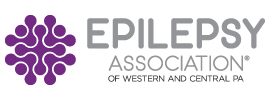
 Donate Now!
Donate Now!
 Donate Now!
Donate Now!

As an educator, you will most likely work with students who have epilepsy/seizure disorders at some point in your career.
Epilepsy is a medical condition that is unique from person to person. The experiences of people who have epilepsy, including children with epilepsy, run the gamut of seizure type, severity, frequency, and influence on various areas of their lives. Some children who have a diagnosis of epilepsy will gain complete seizure control quickly with one anti-seizure medication and not see any significant impact on their learning abilities, social skills, or day-to-day life, while others will have very frequent and very severe seizures that affect virtually everything they do. The majority of children with epilepsy will fall somewhere in between these two ends of the spectrum of experience. Because of this wide variation in the impact of epilepsy in children’s lives, we recommend finding out as much information as possible about each of your students who have epilepsy so that you will be assured of addressing any and all needs he or she may have in the most effective manner possible.
Educators often encounter several issues relating to working with students who have epilepsy, including seizure management and first aid, the student’s academic performance, and creating an inclusive, supportive environment within the classroom and the larger school community.
As a trusted adult in the school, you will help set the tone as to how the other students will react to the young person with epilepsy. The students will take their lead from you, and if you encourage a sense of acceptance, understanding, respect, and compassion within the student body, you will also be encouraging the social adjustment of the child with epilepsy.
In order to make the other students in the school as accepting and supportive as possible, we encourage you to talk with them about epilepsy. By discussing some of the basic facts — what epilepsy is, what seizures look like, any appropriate first aid steps — and dispelling some of the common myths that surround seizures — it’s not contagious, the person can’t swallow their tongue during a seizure — the students will be better informed and better prepared in the event of witnessing a classmate’s seizure.
Even if you do not currently know of any students in your school who have a diagnosis of epilepsy, chances are that all of the students and staff in your school will know someone at some point in all of their lives who has a seizure disorder. By giving them information about epilepsy prior to their needing it, both young people and school staff will be better prepared for when they do need to know about seizures and how to help someone who has them.
We have a free educational program called Project School Alert that seeks to educate both students and school staff about epilepsy. A trained speaker can visit your school and talk with students of any grade level to help them understand what epilepsy is and how they can help someone who has it. Learn more about our seizure training programs.
Many children with epilepsy can experience learning problems and seizures can contribute to these learning difficulties. If a child with epilepsy is having trouble learning, you should test the child to identify the type and severity of the problem, look for seizure-related factors, and then create a plan for helping the child.
Some of the most common seizure-related factors that could contribute to learning difficulties include:
Seizures are rarely the major cause of learning difficulties but can play a role because of their effect on things like memory. If seizures can be controlled by medication or another treatment, it is possible the learning problems will improve. Sometimes, however, the underlying cause of the seizures can also cause learning problems, so stopping the seizures will not have an effect on the learning difficulties.
Medications that are used to prevent seizures can have side effects that will affect learning, including drowsiness, inattention, and restlessness. The impact of the side effects are not likely to show up on a standardized IQ or school achievement test. These factors can be identified using tests that address attention, memory, or the speed at which the student processes information.
Fears and misconceptions about epilepsy can lead to children with seizures having low self-confidence, anxiety, or depression. This can occur as a result of their own beliefs or from teasing by their peers, which can also affect learning. Counseling may help the student cope with their epilepsy, and educating other students and school staff can reduce teasing and the negative stigma of seizures.